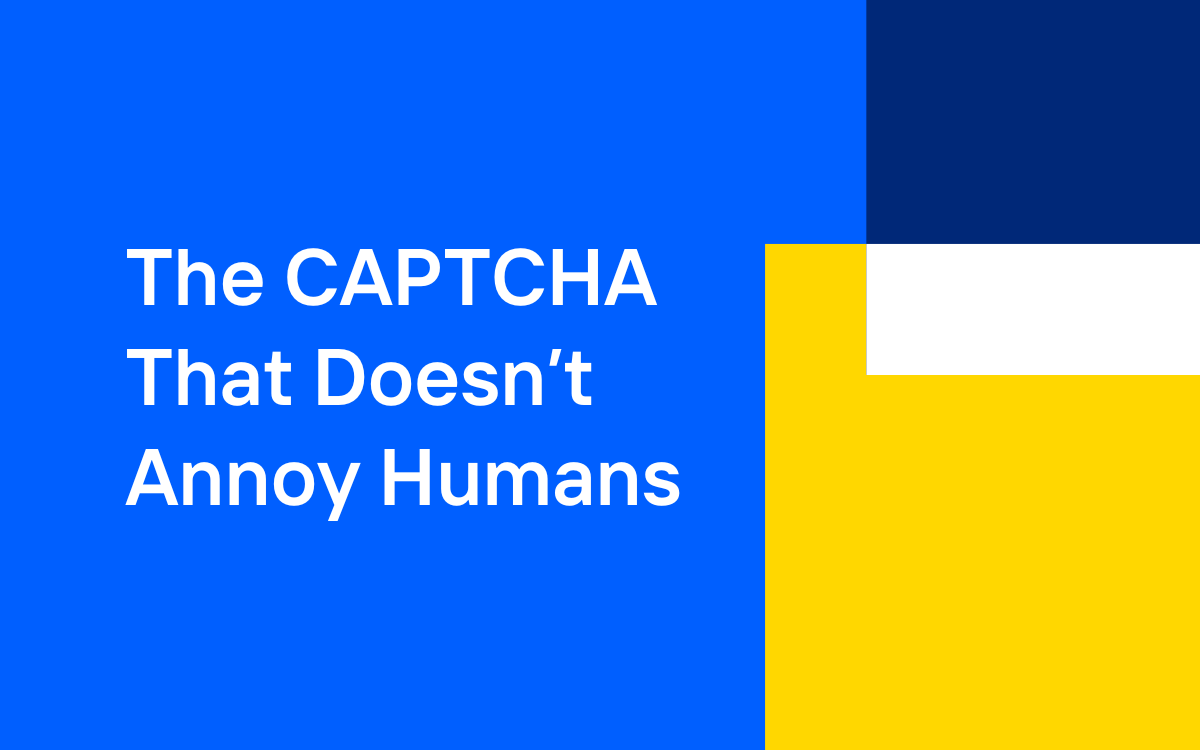The launch of Vercel’s BotID service, powered by Kasada, exemplifies the evolution from puzzle-based human verification to invisible CAPTCHA systems. This shift highlights a critical question: why are we still asking humans to solve problems that machines handle better?
TL;DR: Why Invisible CAPTCHA
- Same security, zero friction: Uses conceptually similar telemetry-based machine learning classification while eliminating the 3-42 seconds humans spend solving puzzles.
- Solves the performance inversion: Bots now achieve 85-100% accuracy on traditional CAPTCHAs while humans struggle with only 50-85% success rates.
- Superior data protection: Advanced client-side systems resist reverse engineering and force genuine browser execution, preventing telemetry manipulation.
- Autonomous operation: Delivers binary decisions without threshold management or ongoing tuning overhead.
- Future-proof architecture: Built for nonstationary security challenges requiring perpetual adaptation against evolving adversaries.

Traditional CAPTCHAs and modern invisible systems actually work in similar ways: they classify sessions based on telemetry analysis collected from browser interactions. The critical difference lies in data integrity and understanding how effectively attackers can manipulate the classification process.
The telemetry classification reality
Here’s what most people misunderstand about CAPTCHAs: the puzzle isn’t the only security mechanism. The puzzle serves as a data collection vehicle.
Whether you’re clicking on traffic lights or sliding a puzzle piece, the real classification happens based on hundreds of signals collected during that interaction – mouse movement patterns, timing characteristics, device fingerprints, browser behavior, network signals. The CAPTCHA service analyzes this telemetry to determine if the interaction came from a human or a script.
However, this approach inherently injects cognitive load on users. The average human takes anywhere from 3-42 seconds to solve a CAPTCHA, depending on the type. As bots have become more sophisticated, puzzles have grown increasingly difficult, creating a fundamental tension: better bot resistance requires more cognitive burden on legitimate users.
Modern invisible systems collect similar telemetry without requiring human interaction. They use sophisticated client-side systems that provide real-time validation of genuine browser environments while gathering signals for classification purposes.
The core technology is the same: telemetry-based machine learning classification. The difference is that we no longer require human involvement.
Understanding the adversarial reality
Bot developers understand this telemetry-based classification better than most security teams. They’ve built automated systems that handle both approaches – submitting fake telemetry to avoid puzzles entirely, while also automating visual puzzle solving when challenges do appear.
This creates a fundamental problem: detection systems must run in browsers that attackers completely control. Unlike server-side security software, client-side protection requires constant evolution and sophisticated anti-reverse engineering techniques to stay ahead of analysis and manipulation.
The reverse engineering process:
- Extract and analyze the CAPTCHA provider’s JavaScript detection code
- Identify what telemetry signals the classification model expects
- Generate synthetic telemetry that mimics human behavior patterns
- Submit fake data to bypass the classification system entirely
Interestingly, most modern “CAPTCHA solvers” have transitioned from human puzzle farms to AI systems. The manual puzzle-solving market has been largely disrupted by this more effective approach. No clearer evidence exists that AI is better than humans at solving these problems.
The classification confusion problem
When bot operators successfully submit fake telemetry, they poison machine learning models with synthetic data. This creates a feedback loop that makes classification progressively less effective over time.
The result is system confusion. Recent studies show bots achieving 85-100% accuracy at bypassing traditional CAPTCHA systems while humans struggle with 50-85% success rates – a complete inversion of the intended security model.
Traditional CAPTCHA systems operate on a shared responsibility model where developers must select classification thresholds – typically a score between 0 and 1 – that determine when to trust a user. This outsources the final security decision to customers who lack visibility into the underlying data quality. Developers are forced to tune these thresholds without understanding how much of the telemetry data feeding their decisions has been compromised by adversarial submissions.
When bots successfully fake telemetry data, it places greater pressure on the classification system to maintain accuracy. In CAPTCHA terms, this manifests as increasingly difficult challenges, CAPTCHA loops, or ultimately blocked legitimate users. Research shows that solving times increase by 57% when users encounter CAPTCHAs in realistic scenarios, but this degradation often reflects the system’s confusion from compromised data rather than legitimate security rigor.
Modern approach: forcing genuine browser execution
Invisible CAPTCHA systems address the data integrity crisis through sophisticated client-side protection that fundamentally changes the adversarial dynamics.
- Secured data collection: Advanced client-side systems – including virtual machines and proof-of-execution validation – dramatically increase data integrity by making telemetry manipulation exponentially more difficult while resisting adversarial reverse engineering efforts.
- Force browser execution: Rather than relying on puzzles that can be automated, these systems force bot operators into genuine browser environments where detection logic must actually execute, making it significantly harder to submit pre-generated telemetry.
- Elimination of puzzle bypass: Removing the visual puzzle eliminates an easily automated attack vector while simultaneously removing human interaction friction. Bots can no longer choose between “solve the puzzle” or “fake the telemetry” – they must engage with the protected collection system.
The result is the same telemetry-based classification approach, but with greatly enhanced data integrity and user experience benefits that traditional systems cannot provide.
Business impact of protected telemetry
When your classification system receives only authentic telemetry, the business benefits are immediate and measurable.
- Classification accuracy improves: Clean data enables more effective machine learning models. Without adversarial data pollution, the system can distinguish genuine human behavior from automation with higher precision and fewer false positives.
- User experience transforms: User studies tracking over 14,000 CAPTCHA attempts reveal that 18-45% of users abandon tasks entirely when confronted with traditional challenges, with abandonment rates 120% higher during contextual interactions like checkout or account creation. Protected telemetry systems achieve the same security goals without requiring human interaction, eliminating this abandonment risk entirely.
- Operations simplify: Traditional systems require constant threshold tuning as adversaries adapt their spoofing techniques. Mature AI classifiers with protected data don’t need to expose scoring systems to humans for management – they deliver binary yes/no outcomes that provide the ultimate developer experience with no ongoing management required.
Evolution, not revolution
This isn’t about reinventing bot detection – it’s about evolving proof-of-work beyond human labor. Traditional CAPTCHAs used puzzle-solving to force browser execution and data collection. Modern systems achieve the same browser execution requirement through advanced client-side protection, without burdening users with cognitive challenges.
Organizations continuing to rely on puzzle-based validation aren’t just creating poor user experiences – they’re trying to solve a nonstationary problem with static solutions. Bot mitigation is an unsolved challenge that requires constant evolution of security controls. The future belongs to systems architected for perpetual adaptation, not those built for yesterday’s threat landscape.
Ready to eliminate CAPTCHAs from your user experience? Contact us to learn how advanced telemetry protection can secure your applications without burdening your users.



